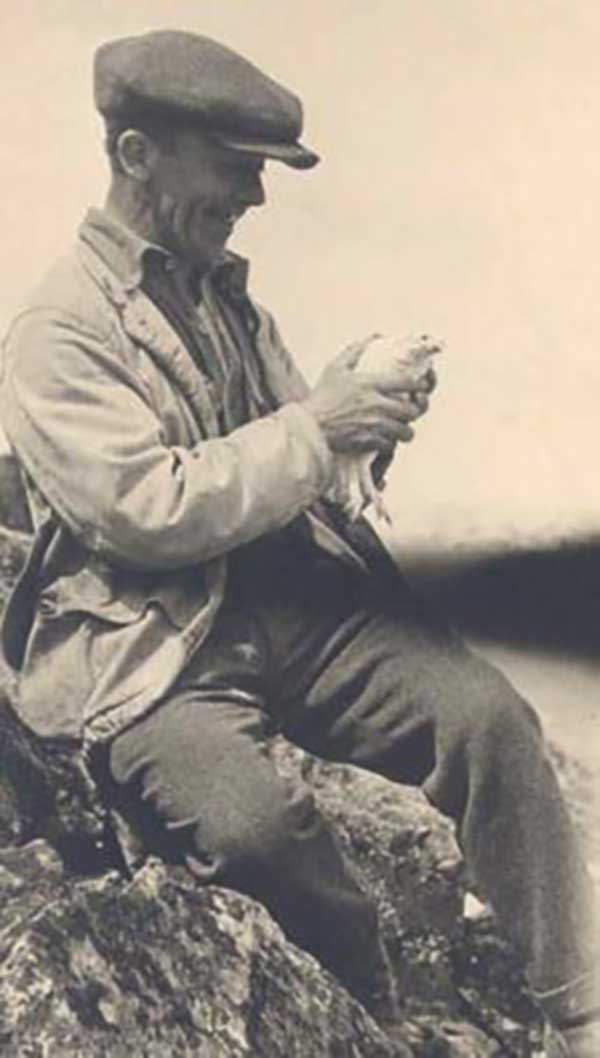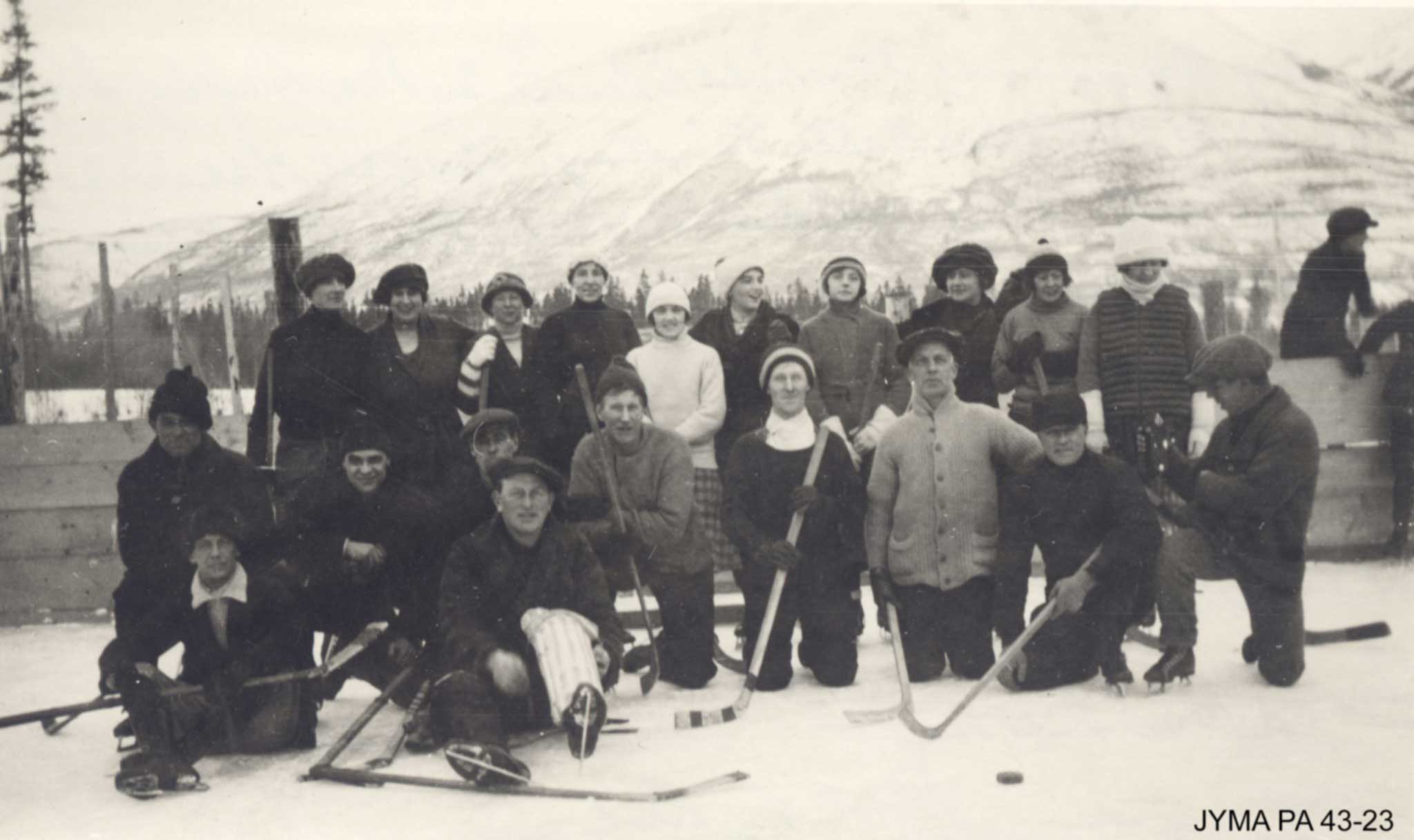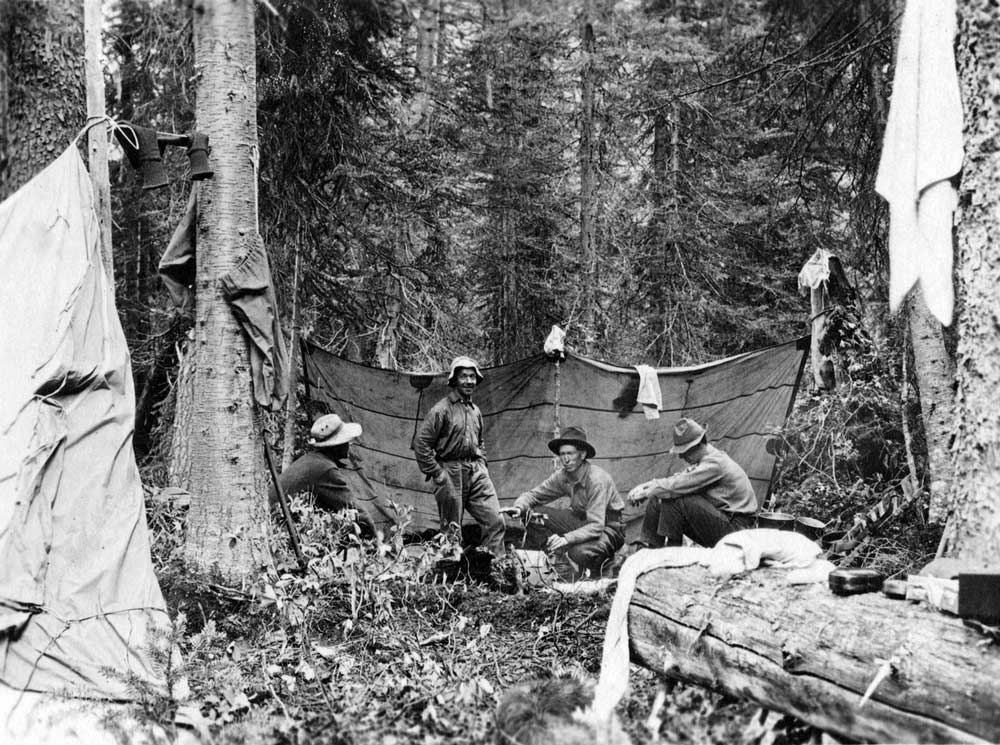NE of N end of Canoe Reach, Kinbasket Lake
52.8436 N 119.1333 W — Map 083D14 — Google — GeoHack
Name officially adopted in 1975
Official in BC – Canada
After Fulton Alexander McKirdy (1874-1960), an early settler in the Valemount area
After Fulton Alexander McKirdy (1874-1960), an early settler in the Valemount area
Association with Mount Fryatt.

Sir George Simpson
Photo by William Notman, 1850
Wikipedia
George Simpson
b. 1792 — Loch Broom, Ross-Shire, Scotland
d. 7 September 1860 — Lachine, Canada
George Simpson who stood at the head of this great field organization [Hudson’s Bay Company] was in 1821 a man with a future rather than a past. He was the illegitimate son of George Simpson, born at Loch Broom in Ross-shire, Scotland, in 1792. Of his early life little is known except that he was given a fair education, was brought to London in 1809, and as a clerk entered the employ of a firm engaged in the West India trade. His native heath in the early nineteenth century was a nursery ground for North American fur-trade leaders, but his own entrance into the industry was the result of his having attracted the favorable notice of Andrew Colvile, an influential member and later governor of the Hudson’s Bay Company. In the spring of 1820 he was sent by the Hudson’s Bay Company to the Athabasca Country to acquire experience in the Indian trade, and there he spent the winter of 1820-21. At that time the war with the North West Company was in the litigation stage, and Governor Williams was under indictment in the courts of Lower Canada. In order to be prepared for the contingency of his removal to Quebec, the Hudson’s Bay Company, in November, 1820, appointed Simpson governor locum tenens. At the coalition, at the age of twenty-nine, he was promoted to joint governorship, with Williams, of the Company Territories, with special charge of the Northern Department of Rupert’s Land including the Department of the Columbia. By 1826 he was governor-in-chief of all the Hudson’s Bay Company Territories in America.
To be governor of the Northern Department of Rupert’s Land in 1821 was to be brought face to face with harassing problems of post-war reconstruction. Rupert’s Land was strewn with the wreckage of battle. There was material wreckage in the form of exhaustion of fur preserves, the duplication of trading posts and the multiplication of equipment and men. More difficult to cope with was the psychological wreckage, mutual bitterness and hate of subordinates of the old companies now brought together in the coalition, habits of drunkenness which competition had fostered among the Indians, relaxed habits of discipline among servants, and the propensity to waste and extravagance formed by the whole fur-trading community. These were the rehabilitation problems of the new governor and they were a test of his quality.
He came to his task with an intellectual equipment that promised much for his success. He had, to be sure, only scant experience in Rupert’s Land, but that was an element of strength rather than of weakness in 1821 since it had as its corollary freedom from the rancors of the war. Indeed, it was one of the chief reasons for appointing him rather than his senior colleague to the great Northern Department. He combined with a sure judgment an exterior of affability that enabled him to heal old wounds and to reconcile men to a new order. As an administrator his talents were exceptional. He had the imaginative vision of a Clive; he drew his plans on a scale that was continental. With vision he combined a grasp of detail that was extraordinary. There was no element of the fur trade from the Athabasca Country to the Sandwich Islands, from Hudson Bay to the steppes of Siberia, that he did not acquaint himself with by personal visit. He was a dynamo of energy, tireless at his work, whether at his desk or on the march. His journeys were famous for their speed; on the present voyage, though he took a route that was unfavorable in passing from Hudson Bay to the Columbia and lost many days by halts for business, he cut the record for the distance from 104 days to 84. On his return, to save time in an emergency, he made a perilous and exhausting overland march from Carlton to the Red River Settlement. His party, when it met relief within a half-day’s march of the Settlement, was half famished and utterly spent, but not the Governor. Without pausing for food or rest he threw himself upon a horse brought by the relief party and galloped off to his duties at Fort Garry. He put the spurs as remorselessly to his subordinates, high and low, as to himself. There is an unsubstantiated legend, which used to circulate in the Red River Colony, that on one occasion his goading drove one of his favorite voyageurs to the point of seizing him by the collar, lifting him into the water, and holding him there until he promised to relent his pace.
Also see [2]

Hugh Drummond Allan, ca. 1914 BC Archives
Hugh Drummond Allan, B.C.L.S.
b. 1887 — Partick, Lanarkshire, Scotland
d. 17 April 1917 — Croiselles, France
Allan was shortly predeceased by his wife and infant child, whether before or after his enlistment after the start of the first World War in 1914. He returned to Scotland and enlisted in Princess Louise’s (Argyll and Sutherland Highlanders). In March 1916, Allen, then second lieutenant, made a will in which he bequeathed all his fortune to “Mrs. Kelly,” the mother of his late wife, Gladys Irene Frederika Allan. “[A]nd I declare that I leave nothing to my own relatives not from any want of affection but because they are much better provided for than my late wife’s relatives and I have not a great deal to leave.”
Sometime in 1916 he was wounded, and in 1917 he was killed leading his company at Croiselles, France.
His estate was probated in 1917, coming to a value of $5540. In March 1918 his executor discovered that “there was due to the said deceased from the Imperial Pensions Department the sum of $532.96.”
The National Archives of the U.K. has officer service records pertaining to Lieutenant Hugh Drummond Allan of Princess Louise’s (Argyll and Sutherland Highlanders).
There is another Canadian figure of Scottish birth named Hugh Allan [1810–1882], a shipping magnate.

Park Warden Pete Withers, Jasper National Park
Jasper-Yellowhead Museum and Archives, PA-23-28
Archives Canada [accessed 17 October 2025]

Jasper hockey game including Mrs. Roy Hargreaves, Mrs. Robert Blewett Sr, Mrs. Digby Harris, Mrs. Fulton, Mrs. Noble Findlay, Mrs. W. Grieves, Phyllis Lofts, Mrs. Nathan Nunn, Mrs. Fred Smith, Miss Parks, Digby Harris, Tom Jones, V. Woodcock, H.B. Webb, Walter Huggins, Harry King, Nat Munn, Pete Withers and Paddy Bateman. 1921
Jasper-Yellowhead Museum and Archives PA43-23 [accessed 17 October 2025]

Joe Weiss, Doug Jeffery, Vern Jeffery, Frank Burstrom and Pete Withers on Geikie Street at the start of their ski trip. 1930
Jasper-Yellowhead Museum and Archives [accessed 17 October 2025]
A. L. (Pete) Withers
In 1924 he accompanied Allen Carpé [1894–1932] and Rollin Thomas Chamberlin [1881–1948] in climbs in the Cariboo Mountains, including first ascents of Mount Titan (now Mount Sir Wilfrid Laurier), Mount Challenger (now Mount Stanley Baldwin) and Mount Albreda [3, 4].
In 1930 Withers was one of a group of five Jasper men who skied to Banff, leaving Jasper on 14 January 1930 and following what is now the Icefields Parkway. Joe Weiss, Vern and Doug Jeffery, and Frank Burstrom were his partners. During the previous summer they had travelled by horse to several cabins in Jasper and Banff and stored bags of food for the trip. Near Saskatchewan River Crossing they were met by two Banff wardens who had snowshoed out to look for them. The trip was a bit easier after that as they had broken trails to get them to Bow Lake and then to Lake Louise and Banff. They arrived just in time for the Banff winter carnival on 4 February [5].
In March of 1930, Withers assisted in packing the party of Russell Hoadley Bennett [1896–1981] of Minneapolis, Clifford White [1902–1964] of Banff, and Joe Weiss of Jasper on their “attack on Snow Dome,” which failed “because of faulty planning conjoined with protracted bad weather” [6].
Rollin Thomas Chamberlin
b. 20 October 1881 — Beloit, Wisconsin
d. 6 March 1948 — Chicago, Illinois

Rollin T. Chamberlin, L. E. “Slim” Goodell, Allen Carpe, A. L. Withers. Photo George Burns University of Chicago
Allen Carpé
b. 20 December 1894 — Chicago
d. 9 May 1932 — Mount McKinley, Alaska
In 1924 Carpé, Rollin Thomas Chamberlin [1881–1948], and A. L. (Pete) Withers went up Tête Creek “and made some fine climbs, among them Mount Sir Wilfrid Laurier.” [1]
In 1925, he was a member of the expedition that made the first ascent of Mount Logan. He lost his life on Mount McKinley in May 1932, as the leader of a party making scientific observations relating to cosmic rays.
Carpé’s name appears with and without an accent in various documents.
Adopted in 1925 as labelled on BC-Alberta Boundary sheets 38 & 39. In lieu of original paperwork this name was reconfirmed 16 July 1963. May have previously been labeled as Wapumoon Lake.
A descriptive name given by Samuel Prescott Fay [1884–1971] in 1914, spelled by him “Wapumoon.”
“Wapumun” is recorded as being a Cree word interpreted as “mirror” or “reflection.”
Named by George D. Kilpatrick, minister of St. Andrew’s Presbyterian Church in Ottawa from 1920 to 1925, while climbing in this area in 1923, after his wife Ruth. (30 November 1923 letter from Kilpatrick to Geographic Board; Ottawa file OBF 0841, 93I.)
The well-established local name was Elliot Mountain or Mount Elliot, predating 1923 Kilpatrick’s holiday in this vicinity. Mount Elliot is identified in the 1930 BC Gazetteer.
The lake is a very beautiful one, of a rich deep blue colour, some two miles in length by half a mile wide. Situated in a pocket of the surrounding heights, it is so closely encircled that it is very nearly reached before being seen. In consequence it is known locally as “Surprise” Lake. The name, Cecilia Lake, was given by Mr. Lambart and as there are a number of other Surprise Lakes, it has been adopted.
The upper valley of the lake is fairly open with scattered bodies of spruce and balsam of small size. The slopes encircling the basin of the lake are densely forested. The outlet, Cecilia Creek, flows in a broad valley showing much open meadowland along the bottom and densely forested side slopes. It has a northwesterly course of some nine miles to its junction with the Kakwa River. The 120th meridian passes within an eighth of a mile of the most northerly extremity of the lake.
— Wheeler